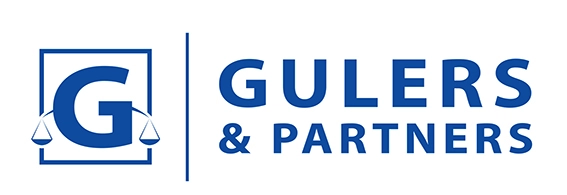Draft Regulation on the Operation of Carbon Markets Regulating the Principles and Procedures of the National Emissions Trading System Submitted for Opinion
The Energy Market Regulatory Authority opened the Draft Regulation on the Operation of Carbon Markets for consultation. The Draft Regulation envisages the establishment and operation of carbon markets for the issuance and trading of greenhouse gas emission allowances in parallel with the EU Emissions Trading System established under Directive 2003/87/EC of the European Union. Thus, it is aimed to reduce greenhouse gas emissions in a cost-effective and economically efficient manner.
In light of Turkey's substantial trade volume with the European Union, the alignment with the principles outlined in the European Green Deal becomes imperative. The forthcoming Regulation on the Operation of Carbon Markets signifies a pivotal step for our country, holding the status of a stakeholder, towards ensuring adherence to the European Green Deal mandates and provide the establishment of transparent, equitable, and notably conscientious carbon markets.
The EU Emissions Trading System ("EU ETS"), adopted in 2003 under Directive 2003/87/EC of the European Union in 2003, is a "cap-and-trade" system. Cap-and-trade systems are public regulatory programs designed to limit the total level of emissions of certain chemicals, particularly carbon dioxide, as a result of industrial activities. Under these schemes, emission allowances are allocated to businesses engaged in emission-causing activities, and these allowances allow for an upper limit of emissions that are subject to gradual reductions.
Accordingly, the EU ETS also sets an upper limit for greenhouse gas emissions and aims to reduce the upper limit over time. In the EU ETS, the cap consists of a certain amount of emission licenses called "allowances". A certain number of allowances, each equivalent to one ton of carbon dioxide gas, are issued annually for submission to carbon markets. These allowances are purchased and traded by businesses through an auction procedure.
The Draft Regulation on the Operation of Carbon Markets ("Draft Regulation"), which will regulate the procedures and principles of the domestic emissions trading system ("National ETS") expected to enter into force in Turkey in 2024, was published on the website of the Energy Market Regulatory Authority ("EMRA"). The Draft Regulation sets out the establishment and operation of carbon markets in which the persons who carry out the activities or operate the facilities specified in Annex-1 of the Regulation on Monitoring of Greenhouse Gas Emissions will take part as participants in order to encourage the reduction of greenhouse gas emissions in a cost-effective and economically efficient manner. With the "Primary Carbon Market" to be established in this direction, allowances will be distributed or sold among the participants through auction method; and in the "Secondary (Spot) Carbon Market", the trading of these allowances among the participants will be managed and monitored in the registry. As in the EU ETS, an allowance will correspond to one ton of carbon dioxide equivalent greenhouse gas emission permits, and transactions for allowances will be carried out through the Emissions Trading Market Management System (“ETPYS”). The initiation of the National ETS marks a critical advancement toward fulfilling the Ministry of Trade's objective within the Green Deal Action Plan for establishing carbon regulations at the border.
In addition to the primary objective of reducing emissions through carbon markets, the National ETS envisages the management of obligations related to allowances, the ability to re-trade allocated allowances, and the establishment of a liability-based, transparent and equitable market.
The Enerji Piyasaları İşletme Anonim Şirketi ("EPİAŞ"), which will assume the role of market operator, will carry out the operation of carbon markets, settlement management, accrual, collection and payment of invoices resulting from settlement, and data publishing activities.
Other important headlines of the Draft Regulation are as follows:
- Allowances in the Primary Carbon Market will be allocated through auctions and/or free allocation method in the amount determined annually.
- The minimum bid size in auctions will be 1 lot and the value of each lot bid will be 500 allowances in the Primary Carbon Market and 1000 allowances in the Secondary Carbon Market. 1 allowance will correspond to 1 ton of carbon dioxide and equivalent greenhouse gas emission value, TL/tCO2 will be used for prices and lot number will be used for quantities.
- In the Primary Carbon Market, if the amount of bids submitted to the auction is less than the total amount of allowances submitted to the auction, the auction will be canceled. A collateral will be required at a rate to be determined by the EPİAŞ in relation to the bids of the participants. Participants with insufficient collateral will not be able to submit bids for the relevant session.
- The Secondary Carbon Market will be operated according to the continuous trading procedure and an obligation will be imposed to take delivery or deliver the matching amount of allowance at the matching price.
- Transfer of allowances is also possible through bilateral agreements between the participants and these agreements will be notified to the ETPYS by the parties.
- In the Draft Regulation, it is regulated that transfers, assignments and pledges of movables by market participants will not be effective against EPİAŞ.
Necessary notifications and explanations were made to our clients regarding the ambiguity in the Draft Regulation, especially in terms of the principles and procedures regarding the upper limit, which is the main element of the cap-and-trade system, the method of gradual reduction of the upper limit and the determination of allocations. Thus, our clients were encouraged to play a role in shaping the regulation as market participants.
There is no definite date for the entry into force of the Regulation on the Operation of Carbon Markets.
The full text of the Draft Regulation can be accessed here (only in Turkish).





















































 Successful
Successful